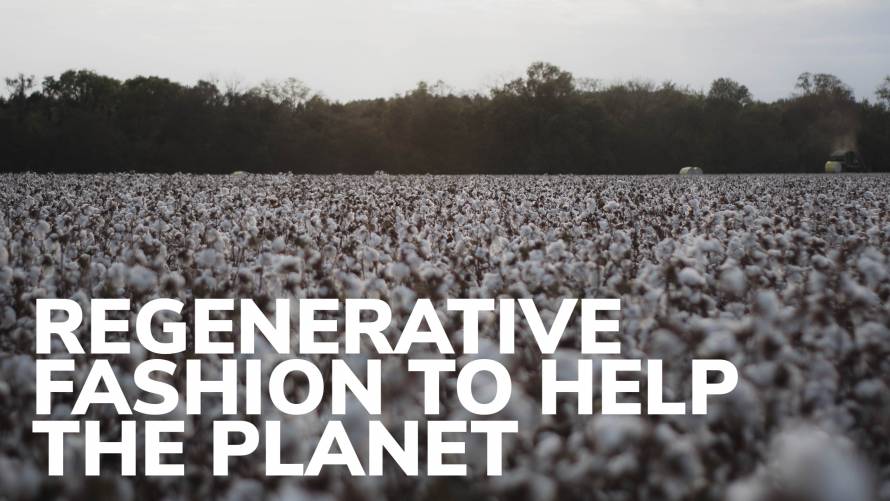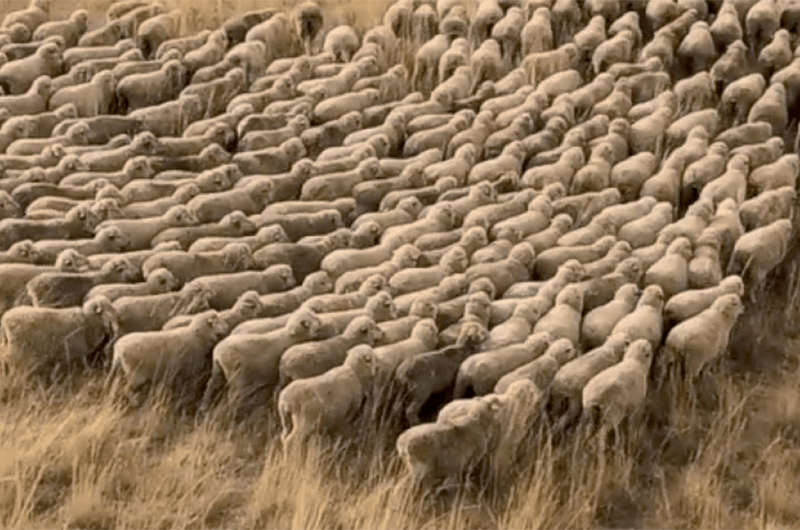
20 July 2021
Regenerative fashion to help the planet
The transformation of the textile industry towards regenerative fashion could be a key to the prosperity of the planet and the business
Regenerative fashion plays a key role to revert Earth degradation, one of the consequences that humans caused with their changes in the ecosystems over time. The Millennium Ecosystem Assessment stated that “During the past 50 years, humans have changed ecosystems more rapidly and extensively than in any comparable period in human history, in large part to meet the growing demand for food, fresh water, wood, fibers, and fuel. This has resulted in a substantial and largely irreversible loss in the diversity of life on Earth. “
The Assessment drew alarming conclusions about ecosystems’ and biodiversity’s health and the consequences of ecosystem degradation for human well-being.
Human action and climate change are putting at risk the ability of ecosystems to continue providing services as essential as food production and access to clean water.
According to FAO, around 12 million hectares of land are lost to drought and desertification each year. Today, already 25% of the world’s total land area is affected by degradation. Because of this, the organization estimates that starting from 2015, we only have 60 years of harvests left.
In the world, 1.5 billion people in 100 countries live in high soil degradation or desert areas. The loss of fertile soil, water, and other resources, both for subsistence and commercial use, leaves many people without the means to support themselves and their children. These displaced populations often migrate to urban areas or other countries, increasing demographic pressures and the likelihood of social and political conflict.
What fashion and textile industry has to do with land degradation
Talking about land degradation and fashion leads us to the stage of material production in the life cycle of a product. It is said that around 50% of the environmental impacts of a fashion product occur in the fiber production phase. This is related mainly to agriculture and grazing in the case of natural fibers. Let us start with a closer look at the cultivation practices used in cotton production.
Cotton is the most widely used natural fiber in textiles, accounting for one-third of the total fibers manufactured worldwide. Of this share, around 64% of cotton produced is used in the apparel sector.
According to the OECD, yields in the global cotton sector have been flat since 2004, and the US Natural Resources Conservation Service estimates that soil erosion and desertification have reduced land productivity by 50% and economic losses of up to 400 billion dollars annually.
The actual conventional plow-based cotton growing, based on the use of profound tilling and pesticides and herbicides, increases soil exposure to erosion, interrupts the functions of organisms in the soil, and releases enormous amounts of carbon dioxide into the atmosphere.
The same occurs with grazing, a source of fashion materials such as leather and wool. An intensive system produces overgrazing which occurs when plants are exposed to intensive grazing or short recovery periods. Also, in this case, the soil is not able to regenerate and allow for continuous production of food.
Thus, intensive cotton farming and grazing practices based on monoculture production and the use of fertilizers are not producing the expected results. There is a need to rethink the way we use the soil for production at a global scale.
Regenerative fashion as a new perspective
Regeneration is one of the three constitutive pillars of the circular economy, but strangely, generally neglected. In the fashion industry, the attention Is focused on the first two principles of the circular economy: design out waste and circulating materials. However, the truth is that continuing to circulate materials and products that are harmful to the environment will not lead us to achieve a regenerative economy that is genuinely circular.
Although there is no clear definition of the concept “regenerative economy,” and, by extension, “regenerative fashion,” the idea is that we can re-align human activity with the evolution of ecosystems in a way that we are part of it; and therefore, benefiting it. For example, cotton cultivation practices have to be redesigned so that cotton is grown at the same time it regenerates the environment in which it is produced.
A new body of research that supports the regenerative economy concludes that the natural systems are capable of self-regeneration and do not require pesticides, herbicides, and chemical fertilizers to improve their productivity. We must relearn how to use land to produce what we need mimicking what nature do.
The promise that regenerative practices can reverse climate change and ecosystems health has pulled international fashion companies’ attention.
The battle between synthetic versus natural fibers is getting to a critical point where companies are trapped among mounts of life cycle data that block their initiatives and exposes them to continuous attacks and scandals. This is why leading fashion and outdoor companies support new ways of thinking about circularity and focusing on the left aside pillar of regeneration.
Some initiatives include the most renowned and innovative fashion brands. For example Patagonia, together with the Regenerative Organic Alliance, is helping to create the Regenerative Organic Certified. Kering Group, in partnership with Conservation International, has created a fund to promote regenerative cotton projects in critical areas of the world. Furthermore, brands such as The North Face and PVH have included the objective of sourcing regenerative inputs.
Cradle to Cradle® principles guide the transformation towards regenerative fashion
As stated by The Ellen MacArthur Foundation and based on the Cradle to Cradle principles, a circular economy is regenerative by design. When we design a product, we have to ensure that we eliminate waste, use healthy materials that can circulate in the economy, and ensure it empowers the capacity of ecosystems to regenerate every step of the product life cycle.
The Cradle to Cradle Certified® Products Program categories can serve as clear guidelines to make a truly circular, and thus regenerative, model to encompass a company’s transformation:
- Ensuring material health eliminates the risk of disturbing natural systems’ capacity to provide nutrients, capture carbon, and regenerate.
- Producing with renewable energy ensures the endless supply of energy to move our economies, with no undesirable emissions as a consequence.
- Ensuring water quality is the basic premise of any ecosystem to function.
- If we guarantee the health of soils, we sequester carbon, prevent pollution and water runoff; we can ensure human health and the correct functioning natural and technical cycles.
- And last but not least, a healthy environment can provide a more stable income for farmers around the world. Regenerative natural fiber growing can provide more than one harvest per year, ensure the health of the soil, and the sustainability of farmers’ and cattle growers’ sources of income.
Restoring natural cycles through a viable economic model is the final objective of circular fashion that achieves climate commitments, restores ecosystem resilience, ensures human health, and combats poverty.
The fashion sector is facing the most significant revolution since industrialization. Implementing the principle of regenerative economy in all stages of the life cycle of fashion products might be the answer we have been waiting for a long time to confront global challenges.
Cradle to Cradle Certified® is a registered brand of the Cradle-to-Cradle Products Innovation Institute.
Original article by Ester Xicota with contributions by Aglaia Gómez and Ariadna Alcalde.

